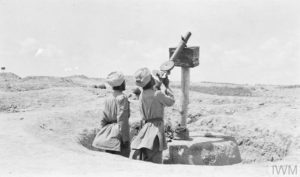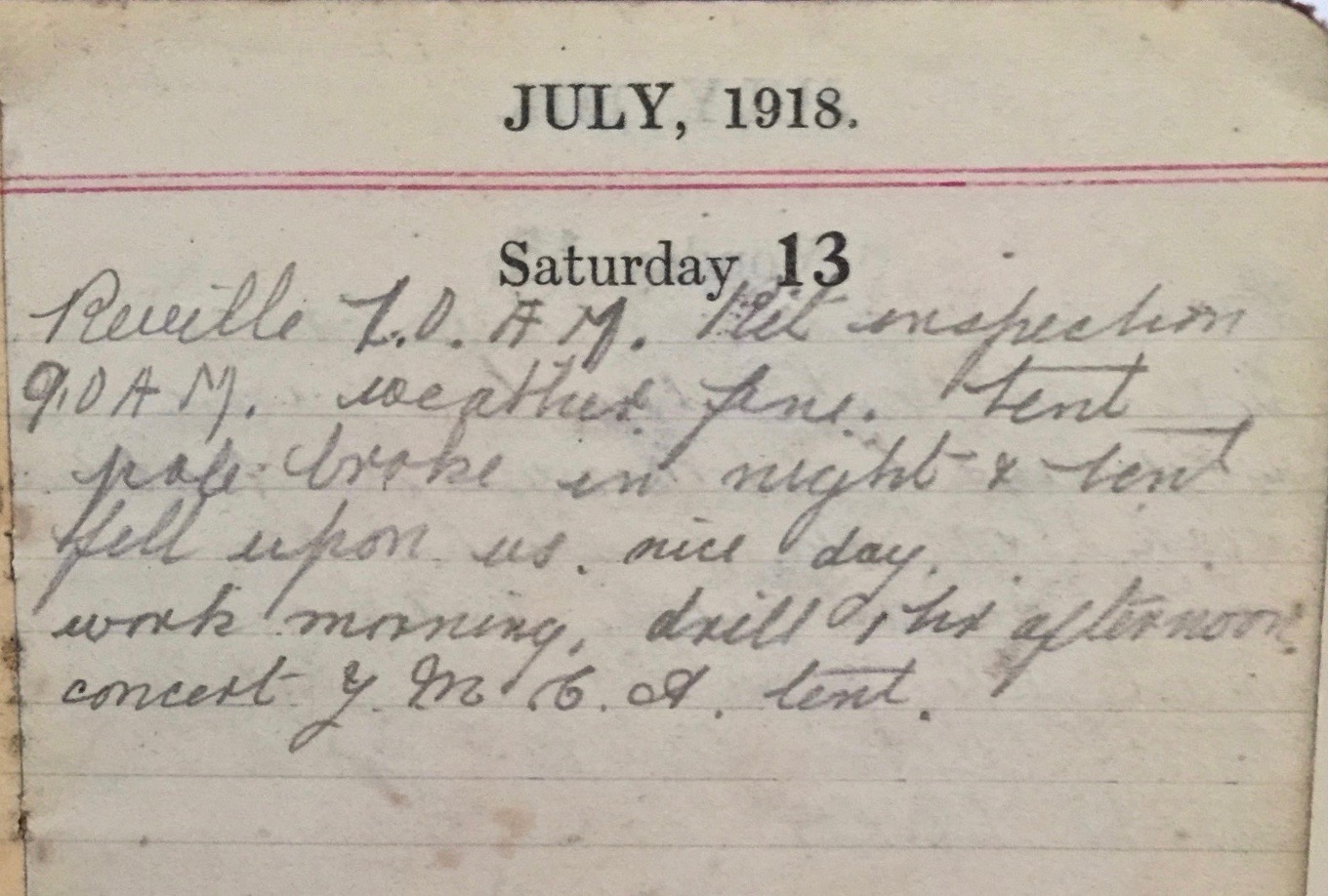Saturday July 13th, 1918
Reveille 7am. Kit inspection 9am. Weather fine. Tent pole broke in night and tent fell upon us. Nice day. Work morning, drill one hour. Afternoon concert in YMCA tent.
A Good Day
Frank seems in a good mood today – despite having the tent fall in on him and his sleeping comrades overnight. Buoyed up undoubtedly by nice weather and an afternoon concert.
Aircraft in War Time
WWI accelerated the transformation of aircraft as a tool of warfare. Planes started the war performing reconnaissance and improving artillery accuracy and ended as fighting machines in their own right. For the British in April 1918, the Royal Air Force became an independent leg of its armed services.
Aeroplanes were mounted with machine guns and bombs and conducted both standalone and integrated assault operations. Hand-in-hand with their increased attack capability came the need to defend against them.
Anti-Aircraft Tactics
The challenges of defending against three-dimensional warfare were threefold. The first two were altitude and trajectory (aircraft being the ultimate sky-borne, moving target). The third was ammunition – requiring both incendiary and non-contact explosives.

Over the course of the war both sides developed a combination of heavy artillery and machine guns for anti-aircraft work. The latter were mobile but only good up to a thousand meters while the former had a greater height and range but were more static.
‘Soon the forces were adding various machine-gun based weapons mounted on poles. These short-range weapons proved more deadly, and the “Red Baron” is believed to have been shot down by an anti-aircraft Vickers machine gun.’¹
The photograph shows two Indian soldiers in Mesopotamia manning a Lewis gun set up as an anti-aircraft gun. The gun is resting on a block of wood on a wooden post.*
The Germans invested most resources into anti-aircraft measures both over Germany and on the Western Front. As such they were the most effective and shot down ‘1,588 aircraft. The next highest national total was that of France, with about 500, while British Expeditionary Force gunners claimed 341 kills, and Italy claimed about 150 kills. U.S. AA gunners, arriving late in the war, claimed 58 kills.’²
Early Warning Systems
Both sides developed a variety of systems for early detection of an aerial attack. They ranged from troops on guard to rather bizarre-looking listening devices. Presumably the ‘bombardment slits’ mentioned today in the BWD were part of this system. I haven’t been able to find any information on them – any insights gratefully received.
13th (Service) Battalion War Diary – 13th July 1918 – Abancourt, France
Domestic fatigues. Bombardment (aircraft) slits started round the camp. Capt JP Goldschmidt and 3 OR left on leave.
References & Further Reading
¹ ‘Anti-aircraft warfare‘ on Wikipedia
² ‘WWI Anti-aircraft Weapons‘ on Weapons and Warfare
* Q 24660, copyright Imperial War Museums


